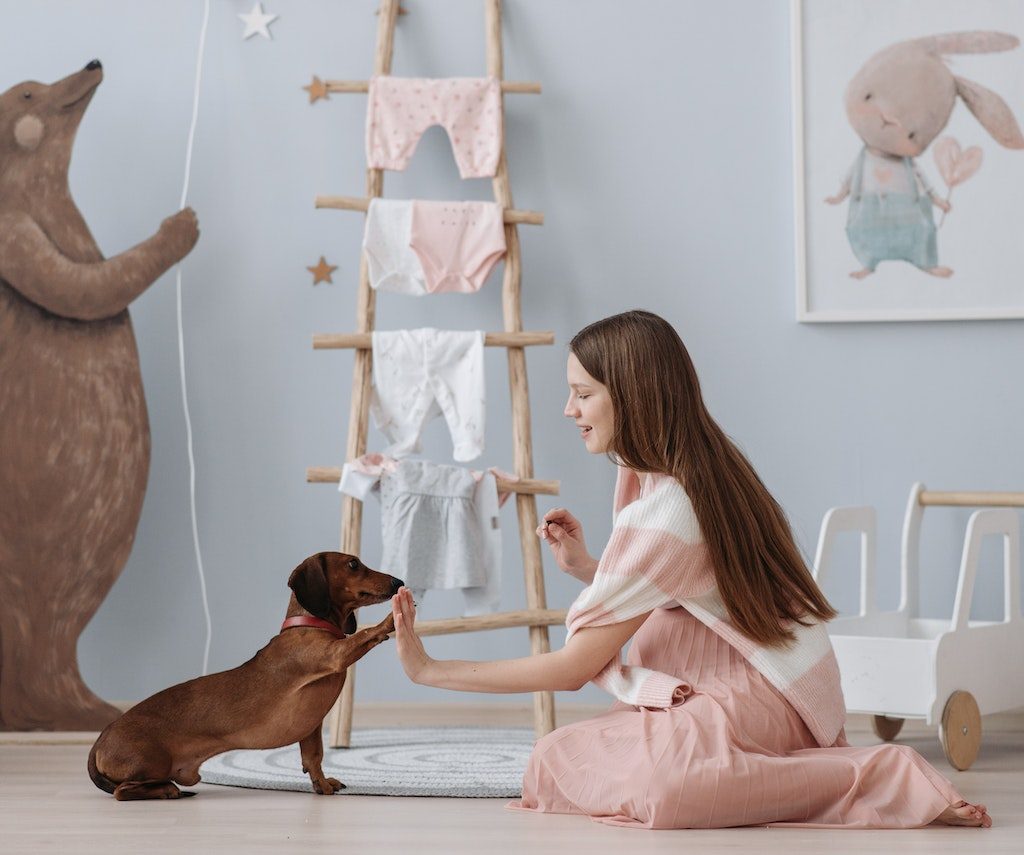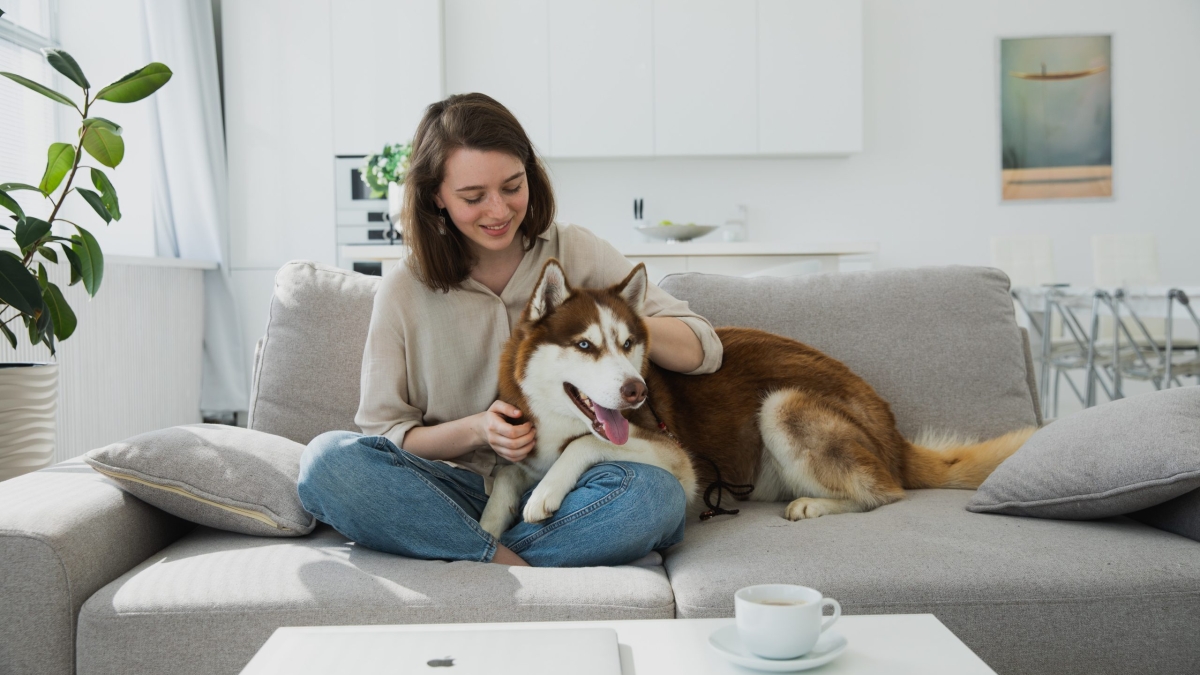As a pet owner, it’s crucial to understand your pet’s body language to ensure their happiness and well-being. This article aims to provide a comprehensive guide to interpreting pet behavior and communication through body language. By understanding your pet’s nonverbal cues, you can better communicate with them and respond appropriately. In this article, we will cover the basics of signs of anxiety and stress, signs of aggression, and how to build a stronger bond with your pet through body language. By the end of this article, you’ll be equipped with the knowledge and skills necessary to understand your Furry Friends’ body language.
Understanding Canine Body Language
1. Tail Wagging
When a dog wags their tail, it can indicate excitement, happiness, or a friendly greeting. However, a stiff tail held high can indicate dominance or aggression. A tail tucked between the legs is a sign of fear or submission.
2. Body Posture
A relaxed, loose body with a wagging tail is a sign of a happy dog. However, a stiff, tense body with raised hackles can indicate fear or aggression. A lowered head and crouched body can indicate submission or fear.
3. Vocalizations
Dogs communicate through barking, growling, whining, and howling. A deep, low growl can indicate aggression, while a high-pitched whine can indicate excitement or anxiety.
Understanding Feline Body Language
1. Tail Positioning and Movements
A cat’s tail can indicate its mood. A relaxed, upright tail is a sign of contentment, while a puffed-up tail indicates fear or aggression. A tail held low or tucked between the legs can indicate anxiety or submission.
2. Ear and Facial Expressions
A cat’s ears can move independently, and its position can indicate its mood. Ears forward indicate curiosity, while flattened ears indicate fear or aggression. A relaxed face with half-closed eyes indicates contentment.
3. Eye Contact
Direct eye contact with a dog can be seen as a challenge or threat. A relaxed dog will make brief eye contact and then look away. Staring or prolonged eye contact can indicate aggression or fear.

Signs of Anxiety and Stress in Pets
1. General Signs of Anxiety
General signs of anxiety in pets include restlessness, panting, excessive grooming, and avoidance behaviors. Changes in appetite or sleep patterns can also be signs of anxiety.
2. Canine-Specific Signs
Canine-specific signs of anxiety can include excessive barking, whining, or howling. Dogs may also chew or destroy objects, dig holes, or try to escape.
3. How to Help Calm an Anxious Pet
Create a safe and comfortable environment for your pet. Provide mental and physical stimulation through play and exercise. Talk to your vet about possible medications or therapies to help alleviate anxiety. Consider using calming aids, such as pheromone sprays or calming music.

Signs of Aggression in Pets
1. General Signs of Aggression
General signs of aggression in pets can include growling, snarling, baring teeth, and lunging. Pets may also display stiff body language or raised fur.
2. Canine-Specific Signs
Canine-specific signs of aggression can include biting or snapping, showing teeth, and stiffening or tensing their body. Dogs may also growl or bark aggressively.
3. Feline-Specific Signs
Feline-specific signs of aggression can include hissing, swatting, and biting. Cats may also have dilated pupils, flattened ears, and raised fur.
Signs of Playfulness in Pets
1. General Signs of Playfulness
General signs of playfulness in pets can include wagging tails, play bows, and jumping around. Pets may also vocalize, such as barking or meowing in a playful manner.
2. Canine-Specific Signs
Canine-specific signs of playfulness can include fetching, tugging, and play fighting. Dogs may also enjoy playing with toys, such as balls or frisbees.
3. Feline-Specific Signs
Feline-specific signs of playfulness can include chasing and pouncing on toys or objects. Cats may also enjoy batting around balls or string toys.
Understanding Pet Emotions
1. General Emotions
Pets Can Experience a range of emotions, including happiness, fear, anxiety, excitement, and sadness. They may also feel emotions such as jealousy, frustration, and boredom.
2. How to Recognize and Respond to Pet Emotions
Observe your pet’s body language and vocalizations to recognize their emotions. Respond with appropriate actions, such as comforting your pet if they seem scared or providing mental stimulation if they seem bored. Seek professional help if your pet’s emotions seem persistent or extreme.
3. How Pet Body Language Can Convey Emotions
Pet body language, including tail movements, ear positions, and facial expressions, can provide insight into their emotional state. For example, a wagging tail may indicate happiness, while flattened ears may indicate fear or anxiety. Understanding these cues can help you better respond to your pet’s emotions.
Building a Stronger Bond
1. Benefits of Understanding Pet Body Language
Understanding your pet’s body language can enhance your relationship and communication with them. It can also help you respond to their needs and emotions, leading to a happier and healthier pet.
2. How to Use Body Language to Communicate with Your Pet
Use your body language to convey messages to your pet, such as inviting them to play or signaling that you need space. Watch your pet’s body language to understand their response and adjust your communication accordingly.
3. Building Trust and Strengthening
Build Your Bond with Your Pet By understanding and responding appropriately to your pet’s body language, you can build trust and strengthen your bond. This can lead to a more fulfilling and rewarding relationship with your pet. Remember to always respect your pet’s boundaries and preferences.
What Experts Say
Understanding your pet’s body language is crucial to building a strong bond and communicating effectively with them. It’s important to remember that each pet is unique and may have its own individual behaviors and expressions. By consistently observing and learning from your pet, you can strengthen your relationship and create a more fulfilling life together. Keep in mind that there is always more to learn about pet behavior and communication, so continue to educate yourself and deepen your understanding. With patience and dedication, you can create a strong, lasting bond with your furry friend.
